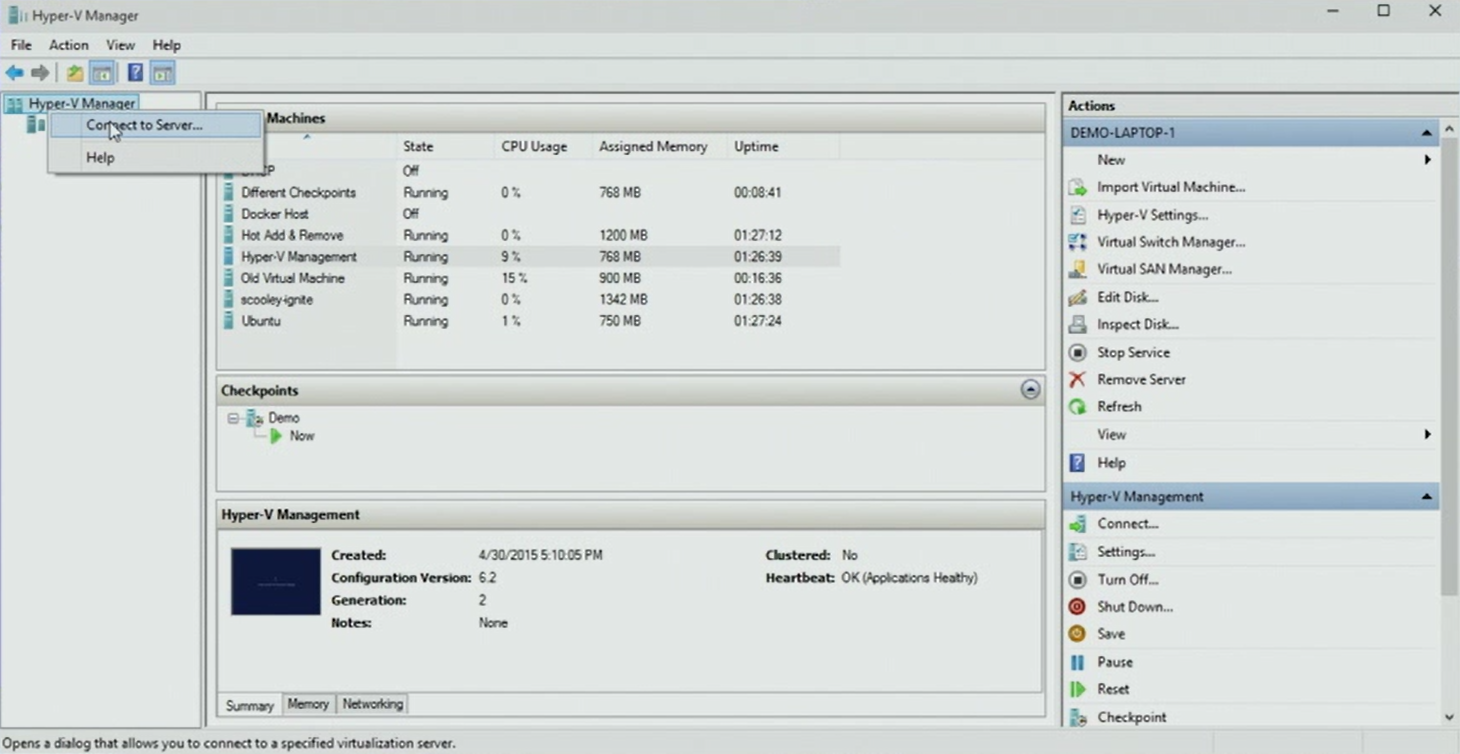Top 6 New Features Offered in Hyper-V Technical Preview
Since its release back in October 2014, the latest Windows Server Technical Preview made available has created a great deal of buzz around Microsoft’s further attempt to close the gap between on-premise and in-cloud datacenters. Most notably are the announcements made at the recent Ignite conference surrounding the next offering of Hyper-V. The following are a rundown of the top X features announced in no particular order:
- Shielded / Isolated Virtual Machines – On of the more larger challenges in regards to cloud adoption has been organizations trust in storing data in the cloud. In a shielded / isolated VM scenario, said VMs are only able to run in fabrics designated as owners of that virtual machines. The Virtual Machines will have the ability to utilize Bitlocker via a virtual TPM chip thus preventing access to memory or code at rest or running.
- Rolling Cluster Upgrades – This allows IT administrators the ability to upgrade SOFS and Hyper-V clusters running Windows Server 2012 R2 to Windows Server Next without workload disruption. The process involves running the cluster in a mixed mode operational level. One by one, each clustered node has it’s roles removed. Once completed the cluster is removed, upgraded to Windows Server Next, then placed back into the cluster.
- Storage Spaces Direct – Like in Storage Spaces, Storage Spaces Direct provides the same great storage functionality however it also enables IT administrators to allow in-chassis disks to provide parity for storage workloads spread amongst several physical servers. Furthermore it enables the utilization of 10Gb & 40Gb NICs for bidirectional traffic between the nodes.
- RDMA traffic enhancements – The RDMA protocol enables lightning fast file transfer speeds via SMB3 network fabrics allowing for enhanced storage performance. In Hyper-V Next. In essence, the same NICs responsible for the VM networking traffic can now be used for RDMA traffic thus capitalizing on the existing 10Gb & 40Gb network adapter investment present in a traditional cluster environment.
- Storage QoS Enhancements - More granular control is now enabled across an entire Hyper-V failover cluster thus allowing organizations to define IO limitations to specific VMs. These enhancements can also safeguard a IO intensive server on the storage fabric attempting to consume massive amounts of IO thus affecting the performance of said virtual machines located in the cluster.
- Nested Virtualization – Previously administrators were only able to run Virtual Machines (VMs) on physical hardware. While not much of a problem in production, demoing theories and/or training staff could greatly benefit from running a VM from within a VM. This is made possible in Hyper-V Next with with the ability to run Hyper-V from within a virtual machine thus building out a scenario to demo.
The above top 6 new features are not the only features announced for the upcoming Hyper-V Next offering. Be sure to watch What's New in Windows Server Hyper-V in it’s entirety as recorded at the recent MS Ignite conference.
